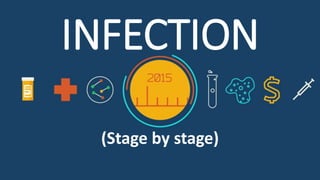This document outlines the stages of infection and some common skin diseases seen in adolescents. It discusses the incubation, early symptoms, clinical, and recovery stages of infection, as well as the possibility of relapse. It then describes three common skin conditions seen in teens: acne, warts, and fungal infections (tinea). It provides details on types of each condition and their symptoms, causes, and management.


























































